Six days a week, junior Kari Robinson heads to Studio5, changes her shoes, and takes to the dance floor for class. As she stretches at the barre or crosses the floor for a sequence, she builds strength, artistry and passion for the activity she’s invested practically all of her free time into.
Robinson first began to dance as a three-year-old. She entered Dance Center Evanston’s “Tippy Toes” programs—classes for the youngest dancers that focus on play and basic movement. As she grew older, she learned different styles of dance, made close friends and decided to join a performance company. Despite years of positive dance memories, Robinson found unspoken barriers in the community.
“Sometimes you’ll have a meaner teacher who will favor a certain body type,” Robinson said. “Getting costumes is always really hard. For some reason the sizes are always really small, and they don’t come in a wide variety. It’s hard to get an extra large. A lot of times, companies only have two or three people of color. But the companies that I’m in now have a really good environment and are much better than other, stricter studios.”
Just blocks away from ETHS, Dance Center Evanston (DCE) is a space for people from every age to experience dance, whether through their structured pre-school-to-high-school Student Division, the Academy Program, teen classes, adult drop-in sessions, the boys program or any other option from an endless list of opportunities. For many students that take the strenuous route of pre-professional Academy levels, body standards in dance are hard to ignore.
A lot of people don’t necessarily have an eating disorder, but you stand in the studio and you stare at yourself in the mirror for hours on end. That’s not good for you. Sometimes there’s moments where I’m just like, ‘this isn’t fun.’”
— Senior Maya Chung
“It’s so prominent in the ballet world. You can’t be in the ballet world and not see it,” said senior Maya Chung, who has also danced at DCE since preschool. “A lot of people don’t necessarily have an eating disorder, but you stand in the studio and you stare at yourself in the mirror for hours on end. That’s not good for you. Sometimes there’s moments where I’m just like, ‘this isn’t fun.’”
Historically (and at times, currently), appearance is not a factor that elite dance companies and schools take lightly. Features such as a small head, thin neck, long legs, short torso, a flat chest, muscle definition and pale skin are practically synonymous with the “Balanchine” ideal of a ballerina. Some of these are rooted in the schematics of dance—a thinner body is easier to lift during a pax de deux, for example. In large companies of dancers, conformity and unity is often stressed, leading to standards for height or body proportions used in hiring practices.
For young dancers, these perceptions of the “ideal ballet body” can wreak havoc on mental health. In 2014, a study in the European Eating Disorders Review found that 12% of dancers (16.4% of ballet dancers) had an eating disorder. In 2022, the instance of eating disorders in classical ballet dancers was one in five.
With rigid rules on appearance baked into the ballet industry and further comparison readily available through social media, dancers going through the already trying process of puberty can feel pressured to either give in to an unhealthy lifestyle to meet standards or quit dancing altogether. Dance Center Evanston fights to ensure that this does not happen at their studio.
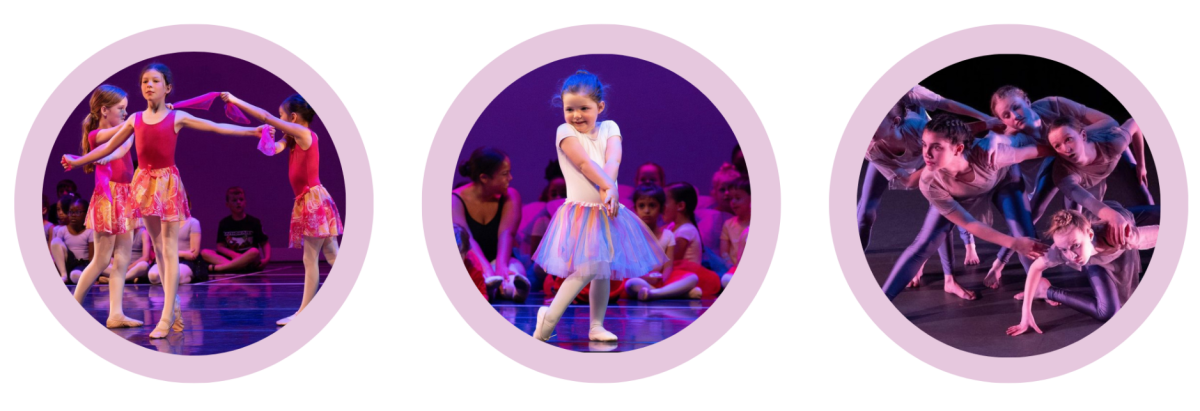
Through changing their course offerings, offering opportunities for scholarships and representing the community through their staff, DCE’s practices have reflected their mission to “offer the highest quality dance education and serve Evanston and its surrounding communities.”
“At the base level, dance is for every body,” said DCE managing director Calyn Carbery. “Everybody. That’s one of our main goals. We’ve been working to meet the dancer in the room, where they are. Whatever you bring to the table, whatever you’re passionate in, whatever you’re interested in, however your body works, no matter what discipline you’re studying, it’s our goal, as teachers, to say, ‘here’s what this can do for you.’ We want to foster that love through the methodology.”
By focusing on the functionality of the body, and appreciating the differences in anatomy between individuals, teachers at Dance Center Evanston hope to combat long-standing traditions of body shaming in the dance community. With high workloads of up to seven classes in a week, dancers put strain on their physical and mental health in their dedication to their art. Building a strong, healthy body is essential to maintaining such a schedule, but functionality isn’t equivalent to appearance.
At the base level, dance is for every body. Everybody. That’s one of our main goals. Whatever you bring to the table, whatever you’re passionate in, whatever you’re interested in, however your body works, no matter what discipline you’re studying, it’s our goal, as teachers, to say, ‘here’s what this can do for you.'”
— DCE managing director Calyn Carbery
“Everyone’s structure is different,” Carbery said. “If a dancer is working on rotation, how will you turn out? If your hips are sitting here and your legs are here, how can you use your musculature to support that? It’s less about presenting a picture and having to make your body meet that. It’s more about what your body has and how you can work with that.”
Maggie Huston, a former dancer at DCE who graduated from ETHS last spring, reflected similar sentiments.
“I was always very tall growing up, which was hard for me because I was told a couple times that I needed to dance more into my height, which was something I couldn’t control,” she said. “That was something I had to navigate. But I feel like Dance Center really helped to make everyone feel confident in themselves. I know about some other studios that don’t have that, so I’m definitely grateful.”
One way Dance Center Evanston has sought to bring diversity into its classrooms—and maintain that diversity into advanced years—is with greater variety in style.
“All of our performing groups have always been built on a diversity of styles,” said Dance Center Evanston founder and director Beá Rashid. “We train dancers in many different styles of movement, and over the years, one thing that has grown with the Dance Center is a breadth of style. When I first opened Dance Center, ballet and modern were the primary styles of movement. We have added jazz, tap, hip hop and partnering.”
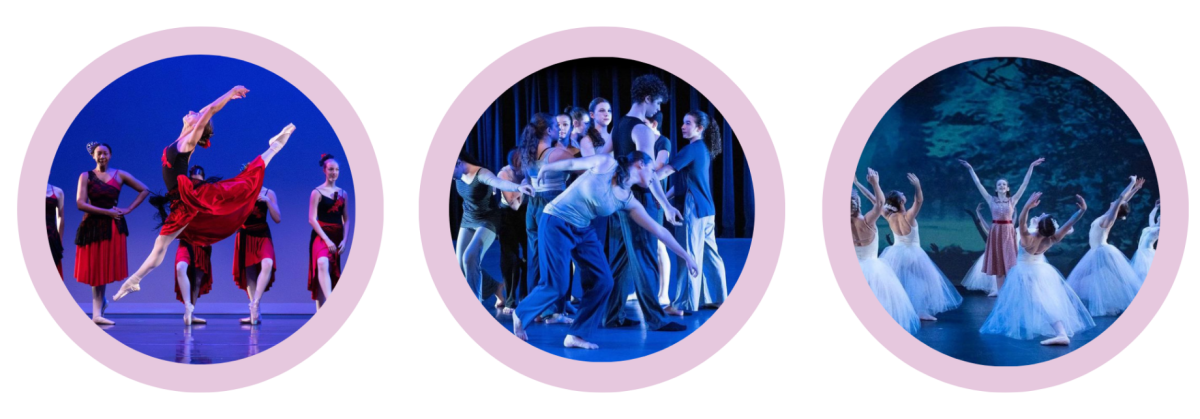
Ballet originated during the Italian Renaissance, and became popularized in Russia and France in the 19th century. The art form developed mainly in Europe, closely associated with the French royal court until the French Revolution. It wasn’t until the late 1800s when ballet gained traction in America. Ballet’s origins in European aristocracy have influenced its spread across the world, including who succeeds in the industry, and who has the chance to try.
“Dance Center Evanston, while it is a studio that teaches various styles, is ballet based, which is historically very European,” said Milner Seifert, parent of a DCE alum and president of the board of directors of Evanston Dance Ensemble. “It’s a very white art form historically. When you take that and you land that in Evanston, you’ve immediately got a challenge.”
Dance Center Evanston, while it is a studio that teaches various styles, is ballet based, which is historically very European. It’s a very white art form historically. When you take that and you land that in Evanston, you’ve immediately got a challenge.”
— Milner Seifert, parent of a DCE alum and president of the board of directors of Evanston Dance Ensemble
Styles such as hip-hop, tap or jazz are deeply rooted in African-American culture, and influenced by a wide spread of methodologies and histories. Featuring less rigidity in rules, these classes can offer a more fluid approach to dance focused on musicality while incorporating technique and a progressive structure.
Junior Beri Barton enjoys Dance Center Evanston’s range of styles for the freedom of expression they grant her.
“In ballet, I have to look a certain way and there’s different positions that I have to do if I’m doing a move,” Barton said. “In hip-hop and jazz there’s a lot of freedom to express myself better. When I was younger, instead of making corrections on my movement, [teachers would] make it on my body. That was kind of what led me to not like ballet as much.”
Senior Cecily Jordan has danced with The Happiness Club, a youth performance group based in Chicago, as well as ETHS’ varsity pomkits. Throughout her experience, hip-hop has been a unifying force.
“Hip Hop itself was founded for people who didn’t have a space to be accepted in those deeply structured dance environments,” Jordan said. “They weren’t able to go to studios and do ballet or contemporary, so I think they were used to making something out of nothing and accepting anyone and everyone who wants to dance.”
The appearance and identity of DCE’s faculty also plays a part in making all students feel comfortable in the studio.
“We’re committed to hiring through an equity lens,” Carbery said. “When we’re seeking any new hires, we’re seeking to have them reflect how our student body looks and reflect the outside community.”
Dancers at the Academy level have the opportunity to become demonstrators in the classes of younger students. Demonstrators show choreography in the front of a studio and can be a role model for other dancers.
Students can see themselves in the instructors. It’s very difficult for boys to come into this program. If we suddenly have a male demonstrator in a room where there’s one little boy in the class, that means a lot to that child.”
— Dance Center Evanston Founder and Director Beá Rashid
“Students can see themselves in the instructors,” Rashid said. “It’s very difficult for boys to come into this program. If we suddenly have a male demonstrator in a room where there’s one little boy in the class, that means a lot to that child.”
As a studio that begins programs as early as age three and utilizes a progressive structure that puts students on a path to a pre-professional program starting at seven years old, Dance Center Evanston works hard to engage as many dancers as young as possible. The more recently incorporated teen program allows students to join the studio at any age, without being placed with much younger peers.
“I’m the only senior in my dance company this year,” Chung said. “There used to be more [students my age], but I was the only person of color in that cohort. In [Evanston Dance Ensemble], of 11 or 12 dancers, there’s two people of color. In classes, there will be like 20 people and three people of color. It definitely needs work. One of the problems in dance is that if you don’t start when you’re young, it’s very hard to climb up. I would love to be able to do more outreach to communities of people with lower incomes and people of color so that they can get younger kids into dance.”
As well as a diversity in terms of appearance, race and age, DCE works to make dance accessible to families of all incomes. A barrier to taking on an intensive dance schedule can be the price—a 45 minute class for one 20-week session costs $399, and DCE’s most dedicated dancers can take seven classes per week. Financial aid for up to 50% of tuition is incorporated by the studio to ensure that money will not inhibit any student from participating.
“We provide scholarships and financial assistance to nearly everybody who asks,” Rashid said. “We know that it’s a privilege to be able to add dance training to your life.”
The Chance to Dance fund, established in 2008 by DCE student Mia Weinberger, has financially supported over 200 students.
“DCE is fabulously generous in scholarships,” Seifert said. “Practically all you have to do is say you need some help paying tuition. [Rashid] wants to keep people around, she doesn’t want to run people off just because they can’t afford classes.”

In addition to her schedule of classes, Robinson spends her weekends in rehearsal for Evanston Dance Ensemble, converting the skills she has learned over the years into a choreographed routine.
A few years after opening Dance Center Evanston in 1994, Rashid created Evanston Dance Ensemble as an opportunity for the most talented of the Center’s dancers to showcase their skills in performance. While it is not affiliated with the studio, the ensemble of 25 high-school students is composed entirely of DCE dancers.
“[EDE] is like a pre-professional company run by adults,” Robinson said. “There’s directors, and they hire guest choreographers. My favorite part of EDE is that the shows end up professional looking. The costumes, the lights, the choreography.”
Unlike DCE, the ensemble is a not-for-profit organization funded completely through fundraising. Rashid made the choice to register the company as a 501(c)(3) nonprofit due to the expenses associated with putting on high-caliber productions. The company’s shows feature professional-grade costumes, lighting and set design, a professional theater and choreography from guest artists that are compensated for their work. Asking individuals to contribute in order to join the company would be creating an unfair barrier to performance.

”[Evanston Dance Ensemble] offers a performing experience to the dancers who auditioned to be in it at almost no cost to them,” Rashid said. “That’s the whole point of it, is that it’s talent based, and they’re accepted because they are at the level to be in the performing company.”
EDE’s current show, American Portrait, examines the meaning of an American experience and is onstage at Northwestern’s Louis Theater from March 14-17. Co-artistic director Enid Smith had many goals for the production, one of which was to represent a wide range of identities—both on the stage and behind the scenes.
“It’s a really fun, broad idea for a show,” Smith said. “All of us have a different idea of what it is to be American, and we all bring a different story to that theme. It’s been really interesting to see the guest choreographers bringing all these different ideas, all the different little pieces and seasonings that have gone into it.”
EDE’s board of directors—composed mainly of parents of EDE dancers and alumni—manages the company’s fundraising and financial decisions. Milner Seifert, president of the board, has watched EDE evolve over the past decade.
[Evanston Dance Ensemble] offers a performing experience to the dancers who auditioned to be in it at almost no cost to them. That’s the whole point of it, is that it’s talent based, and they’re accepted because they are at the level to be in the performing company.”
— Dance Center Evanston Founder and Director Beá Rashid
“When COVID hit, the dancers that [DCE] lost the most were the youngest dancers,” Seifert said. “The ones that had the most investment held on through all the Zoom rehearsals. Ever since things reopened, DCE has been rebuilding.”
During the 2022-23 season, EDE dancers came together to form a student board where fellow ensemble members could share thoughts on how the company was running. Huston spearheaded the formation of the group.
“I saw that the high school’s dance company had a really strong student board, and I could see the benefits of having one of those,” Huston said. “I decided to bring that to the Evanston Dance Ensemble. We spend so much time together and dance is a very hard, strenuous sport. I think it was important to bring light to student voices.”
As well as coordinating company gear and fundraising, the student board served as a forum for students to communicate concerns they had with the ensemble. The board was able to relay between ensemble members and the board of directors. For Robinson, the board offered a voice to share issues with the artistic director at the time, who resigned her position last year.
“[Our former director] made me feel uncomfortable, especially with costumes,” Robinson said. “A lot of times she’d make people cry during rehearsals. She had been director for a long time, and there had always been problems. We would have meetings as students and other dancers would tell us things that [our former director] had been saying that made them uncomfortable.”
Several dancers reported experiencing body-shaming, racial microaggressions and stress induced by the ensemble’s former director. Some, including Robinson and Barton, chose to share their concerns with the board of directors in hopes of improving the atmosphere of rehearsals and the cohesion of the company.
“Last year, our main director was going to retire, so she had the assistant director step up,” Barton said. “She didn’t have any help, and I think she was stressed out. Rehearsal was just not a fun time. So [the student board] met with the [board of directors] to ask them to do something about what was happening in rehearsals.”
“I found our previous artistic director to be a very creative, hard working person,” Seifert said. “As far as I’m concerned, all parties did their best to leave on good terms.”
[Our former director] made me feel uncomfortable, especially with costumes. A lot of times she’d make people cry during rehearsals. She had been director for a long time, and there had always been problems. We would have meetings as students and other dancers would tell us things that [our former director] had been saying that made them uncomfortable.”
— Junior Kari Robinson
Smith is focusing on the present for her first year as co-director of the ensemble. After their fall show, a student-choreographed production titled “You Are Here,” the ensemble—and their new leadership—is gaining momentum.
“I’m just trying to learn everything I can,” Smith said. “Go to every meeting that I’m free to go to, learn all the ropes. It’s been humbling, but exciting. I keep saying to myself, if I love dance, and I love the kids, then how can we go wrong?”
Evanston Dance Ensemble—and Dance Center Evanston—are tight-knit communities of talented dancers that form bonds that last a lifetime. Two of DCE’s current teachers—Shelby Moran Amarantos and Olivia Lemmenes—trained at the studio before studying dance in college and eventually returning to become instructors. Even for students that don’t opt to pursue careers in dance (which is the majority), dance training instills confidence, an understanding of the body, and a platform for exploring creativity, all skills that can be applied across fields.
“Dance took up my whole entire high school experience,” Huston said. “It turned into my social life, just because that’s the way it had to be. I really appreciated having dance as a hobby. It taught me a lot of good life lessons and how to be responsible and manage my time. It really matured me fast, which I appreciate.”
For Chung, who will be continuing her dance study at Butler after her graduation, DCE and EDE provided the perfect jumping-off point.
“I’ve had a lot of really good memories,” said Chung. “I’ve done a lot of things with my lovely dance friends this year like going to rehearsal and then going out to dinner. I’ve had some really awesome opportunities like putting on a production of The Lion, the Witch, and the Wardrobe last year. Right now I’m learning a cool disco ballet duet with one of my best friends ever.”



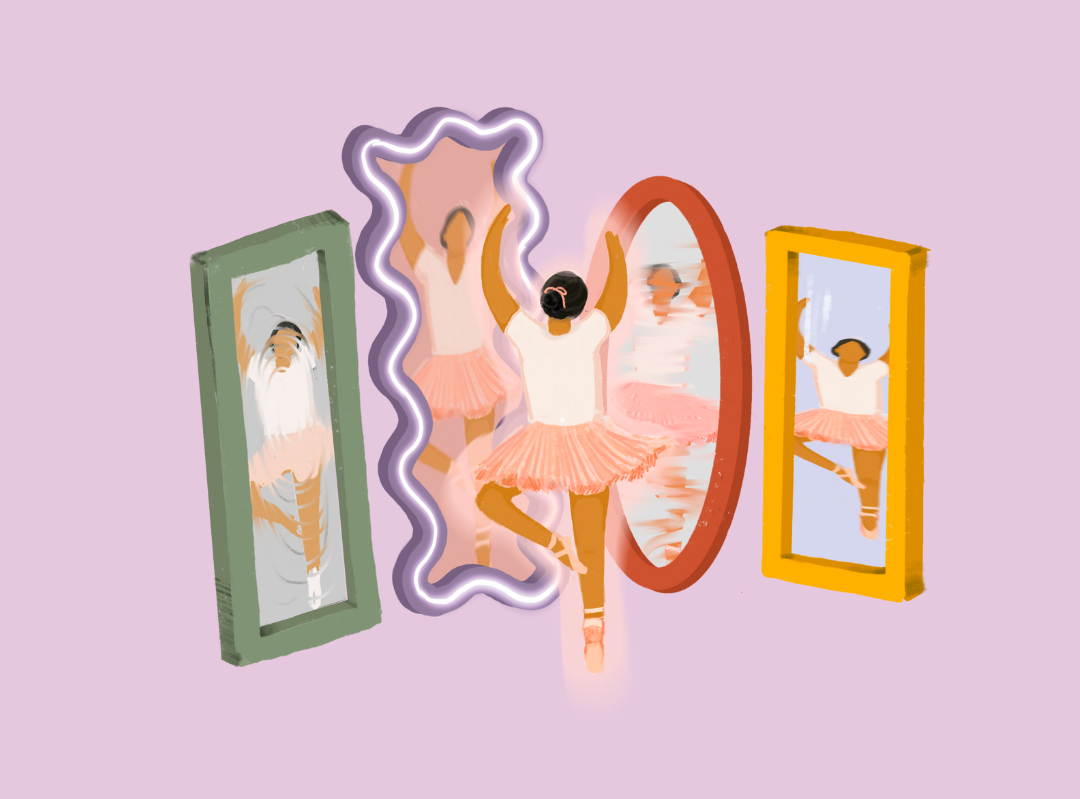


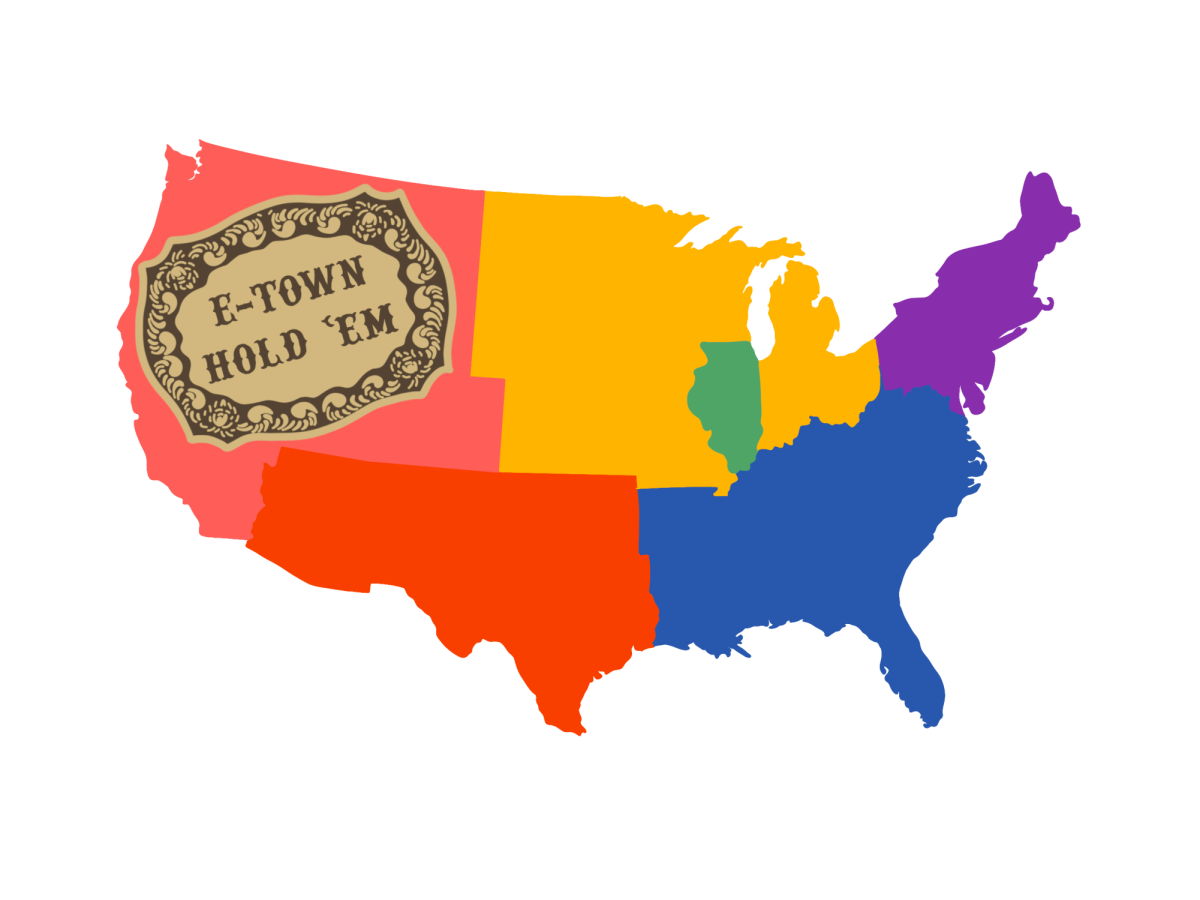

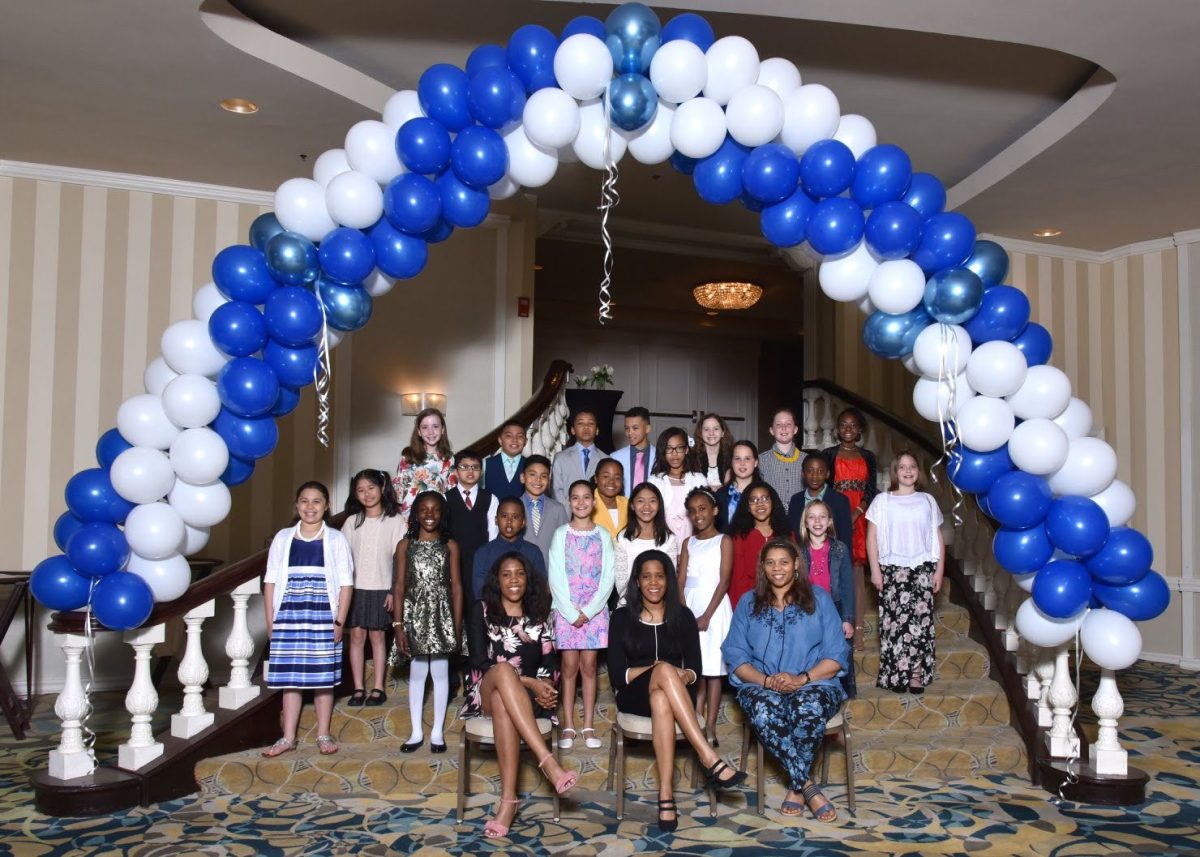
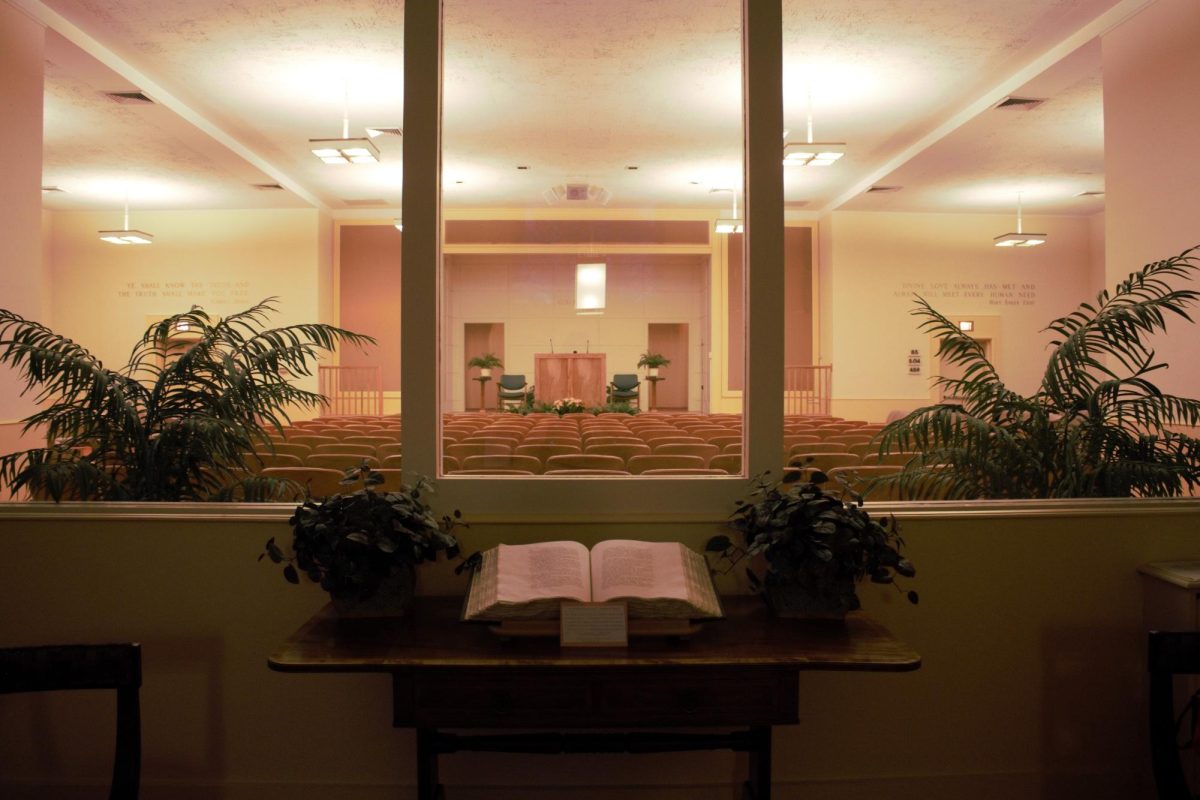
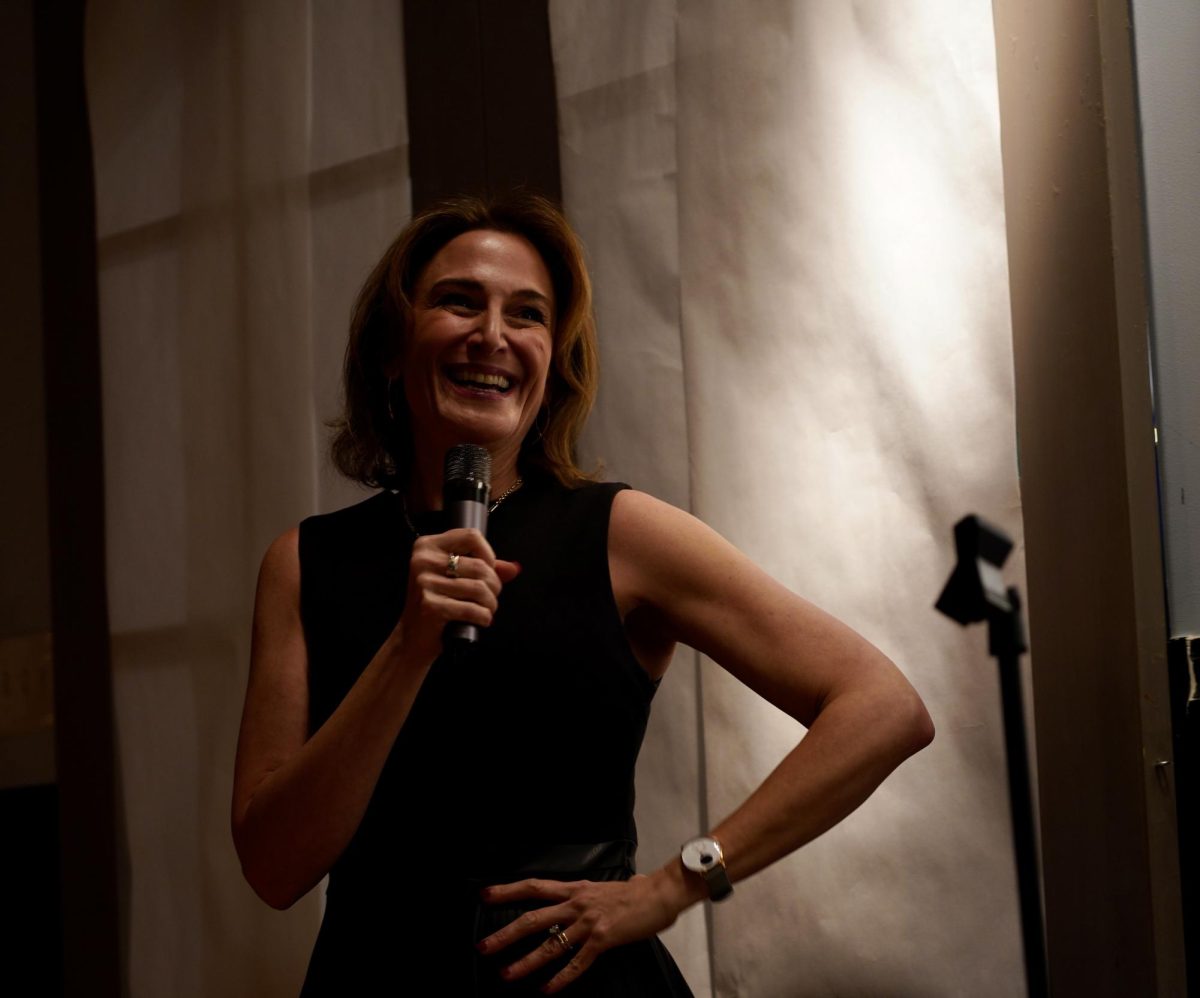
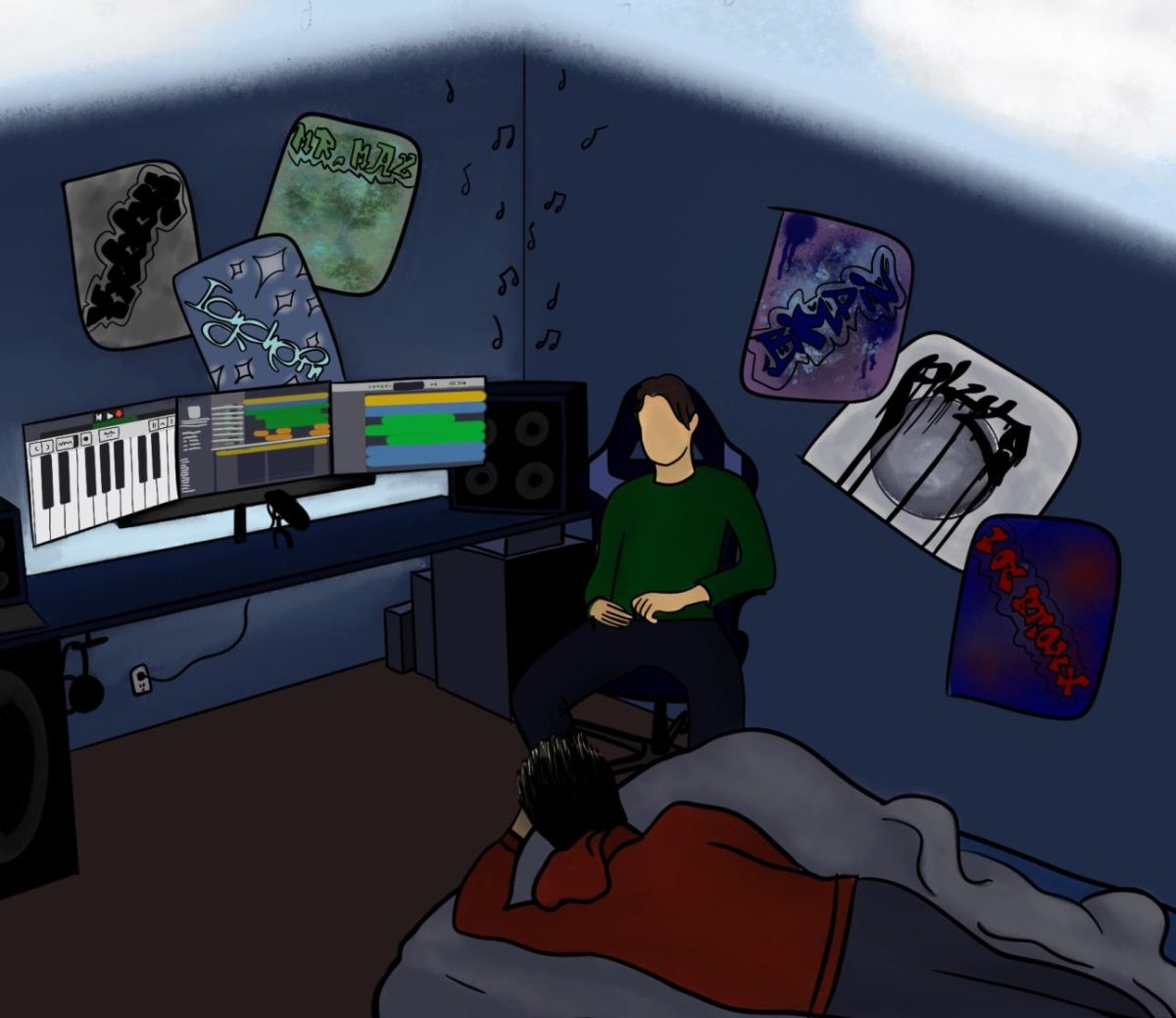

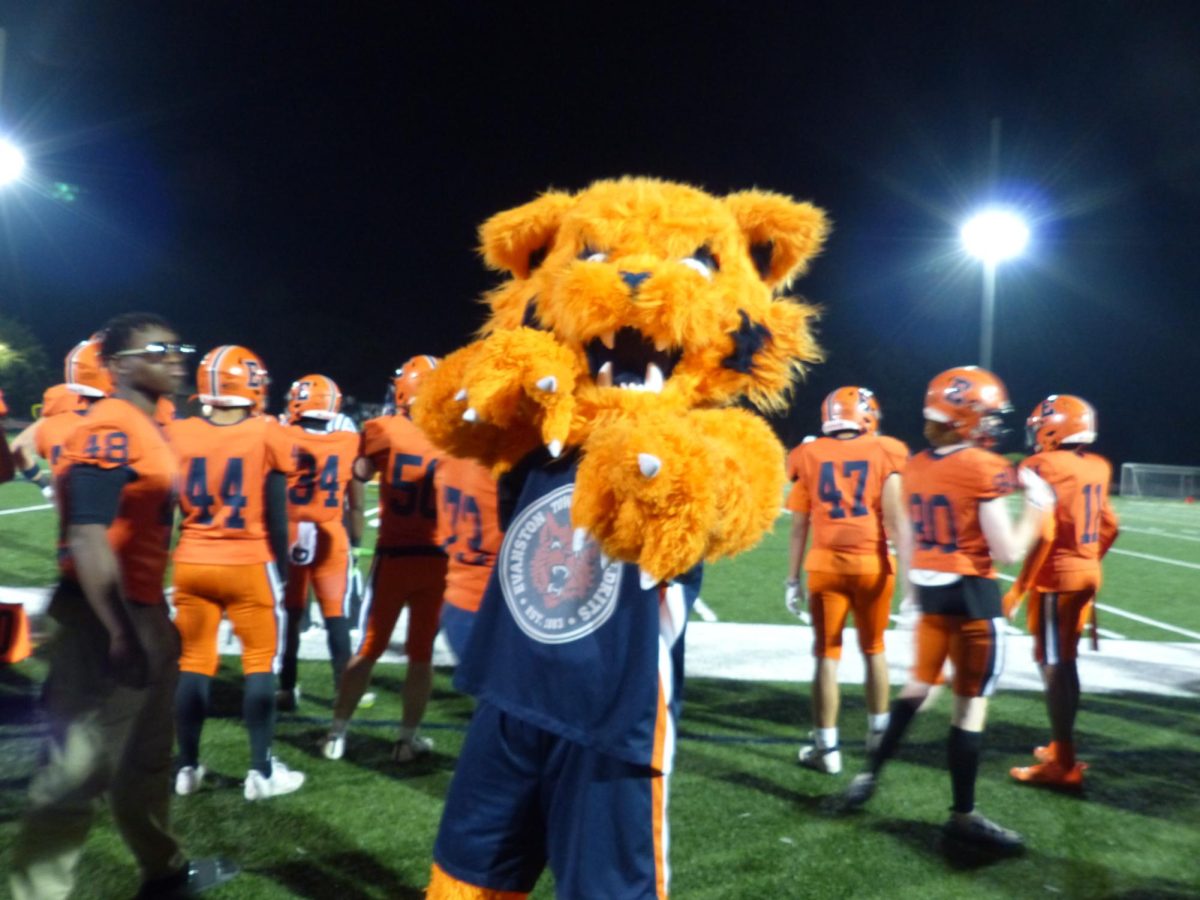

Tony • Mar 16, 2024 at 12:24 pm
A great read! And I must add that DCE is committed to gender inclusivity as well. I am a trans person who has felt completely comfortable being myself at their classes. Bravo DCE! Keep up the fantastic and meaningful work!